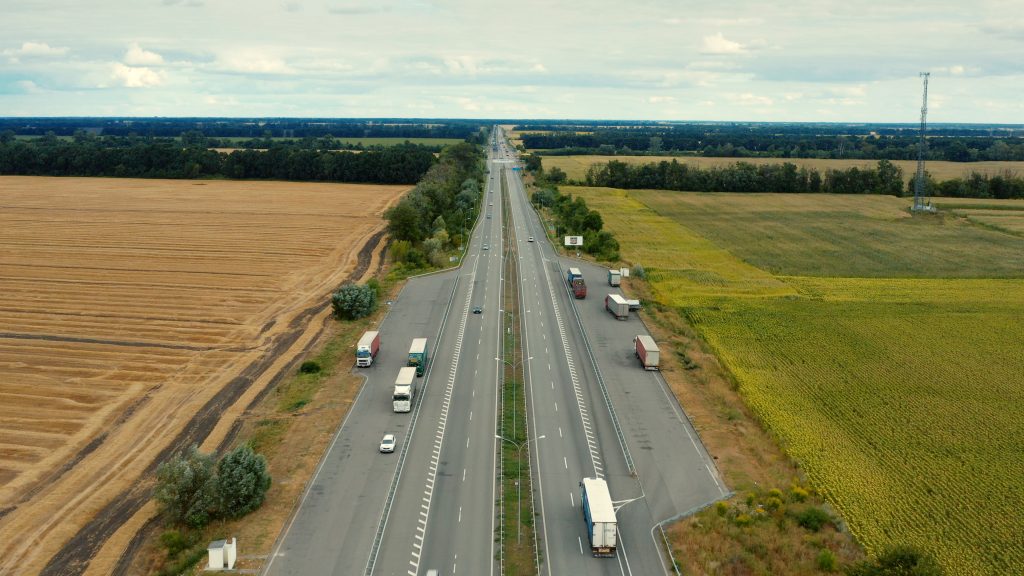From hailstorms and strong winds, to torrential rain showers and heatwaves, any British driver will agree that the moment you set off on a long distance journey can look very different to the moment you get there.
It’s important to be prepared for quite literally, anything. No long journeys are ever the same for all drivers, and accidents can always happen when they’re least expected. But, there may be just a few things we can do to help.
Let’s take a look, and tick off the items on our long journey driver checklist as we go.
Check the weather forecast
Opening the weather app before you set off can mean that you’re not leaving in shorts and a cap, but needing a mack and wellies when you get to your destination.
What’s more, even if you’re lucky enough to just miss a rain shower but are planning to take a long motorway journey, it’s best to be extra cautious of any spray that could impact your view of the road. You may also want to allow for some additional travel time too, as sudden downpours could potentially cause breakdowns, accidents or hazards enroute.
Make sure you’re comfortable
Driver comfort and ergonomics are so important for driver health and wellness, especially when setting up for a long journey.
To get as comfortable as possible, drivers should always ensure their seat is in an optimal position, the steering wheel is properly adjusted, and a lumbar cushion or support is being used if needed. Mirrors should be adjusted correctly to reduce any back and neck strain, and a water bottle should be easily accessible too.
Re-read medication leaflets
For hay fever sufferers, the irritating symptoms of sneezing and watery eyes could be a serious danger whilst doing 70mph on a busy road.
However, taking a hay fever tablet is not always the safest choice, as some can cause blurred vision and drowsiness, so it’s always best to double check the leaflets before taking a dose.
Plan your route
As with any long journey, setting off with plenty of time to spare can help alleviate stress, reduce the risk of aggressive driving and cut down the risk of hitting any heavy congestion.
Taking the time beforehand to check traffic alerts or avoid roadworks can make a huge difference when you’re behind the wheel for such a long time, and it’s always better to be a little early than running late.
Pack the correct sunglasses
A little known fact is that normal, everyday sunglasses can sometimes be too dark for driving, and some frames also block peripheral vision. In fact, sunglasses with category 3 lenses are best for summer driving conditions, and UV400 protection in sunglasses is the safest recommended option.
If a driver isn’t wearing the right sunglasses that prevent them from being dazzled by the bright sunlight, they could be more of a danger on the road than they realise.
Keep cool
For any long distance journeys, it’s an absolute must to keep vehicles well-ventilated to avoid drowsiness.
Tired driving is a behaviour which can be deemed dangerous, especially if the driver gets overheated, agitated or even suffers heatstroke due to lack of proper ventilation.
Check your tyre tread
Proper tyre maintenance is absolutely essential for all vehicles, as any tyres in use which are below the minimum tread, can cause serious safety concerns.
For heavy goods vehicles (HGVs), the current tread depth legislation requires that tyres must have a minimum of 1mm of tread, whereas cars, vans and light commercial vehicles (LCVs) legally require a minimum depth of 1.6mm.
This tread is required across the central three-quarters of the tyre and around the entire circumference, although best practice is to consider replacing tyres when they reach 3mm of tread.
Leaving them at there minimum or lower than their legal tread where they “ball”, means that a vehicle can no longer grip the road safely or enhance proper traction. In other words, it’s much harder to turn, operate and brake when you need to.
Know your vehicle weight limits
Anyone who’s driven a fully-loaded vehicle will recognise that it gets very heavy when it’s crammed with passengers, cases, boxes and the kitchen sink. Overloading will have a great impact on the way a vehicle drives, and the extra weight will make it much harder to control, especially if the weight isn’t distributed evenly.
This means that the vehicle won’t respond to steering inputs as quickly, and it will take a lot longer to build up and maintain speed. It could also increase stopping distance, so an overloaded vehicle will be harder to slow down when avoiding an unexpected obstacle.
For this reason, it’s essential that vehicles should not be overloaded with a weight that’s greater than the manufacturer’s recommendation, and this is especially important to check when heading off on a long journey where those overloading items could move around.
Top up with actual wiper fluid
As tempting as it might be to save a bit of money, you cannot put a cost on safety.
Some of the most common substitutes for wiper fluid is washing up liquid, but many drivers don’t realise it actually contains salt which could damage their vehicles. The same goes for water, where many people choose to empty their water bottle into the container as a quick-fix on the road, however plain water on its own is only handy at getting some forms of debris off a windscreen, but won’t effectively remove grime, oils or grease. This means that if a bird does it’s business on a screen, the water could only make the smearing worse, and as a result, it could dangerously obstruct a drivers’ view of the road.
Clear your cab
A clean and tidy cab can be a game changer when it comes to setting off on a long journey, as dirt, debris, and general clutter can increase stress levels and cause unnecessary anxiety, affecting a driver’s ability to focus on the road.
To keep their cab looking its best, a checklist item should always be to regularly clear out any rubbish, and organise belongings so nothing is too obstructing. But this isn’t just a tick-box for drivers – fleet operators can help here too by ensuring that vehicles have suitable racking and storage, so equipment and materials don’t find their way into the cab throughout their journey.
With you from A to B and everywhere in between
Whether your drivers have just set out on their next long journey, or they’re on the return stretch, Egertons will be right there when you need us most.
With vehicle rescue and recovery services stretching from breakdown to specialist assistance, we’re committed to supporting your drivers no matter what, where, when or how.
Just give us a call, and we’ll do the rest.


